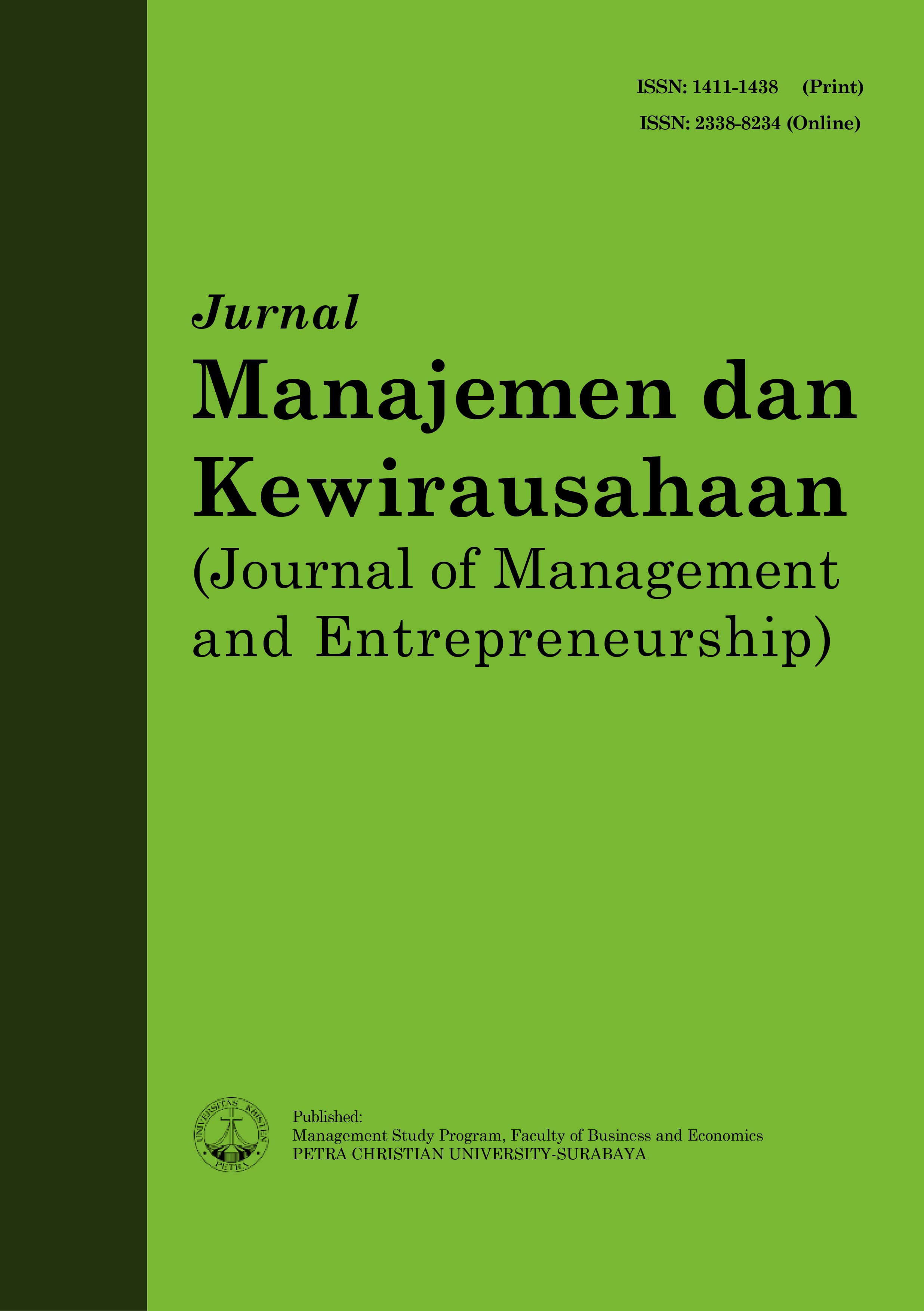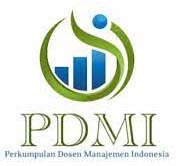EXAMINING KEY DRIVERS FOR ONLINE IMPULSE BUYING IN MALAYSIAN’S PUBLIC UNIVERSITIES STUDENTS
 :
:
https://doi.org/10.9744/jmk.23.2.104-110
Keywords:
Flow experience, online impulse buying, perceived usefulness, organizational trust and job satisfaction.Abstract
With the current growth of the internet, there are signs of e-commerce in Malaysia growing and booming, such as Lazada, Mudah.my, Shopee, and others. Malaysians have been increasingly reliant on the internet to obtain product details and to make purchases. This motivates e-commerce entrepreneurs to devise a new strategy for increasing sales by increasing the rate of online impulse purchases among visitors to online shopping platforms. The aim of this research is to look into the connection between key-driven and online impulse buying. The aim of this research is to create a framework that represents the main drivers of online impulse buying among Malaysian public universities. The study also addresses empirical results from a 303-respondent online survey conducted with SPSS version 22.0 and Smart-PLS version 3.0. The research paradigm is focused on the Theory of Planned Behaviour (TPB) Model, which includes online impulse buying as a dependent variable and three independent variables (Flow Experience, Perceived Usefulness, and Trust). Non-probability methods, judgement sampling, and convenience sampling were used to select respondents in this research, who ranged in age from 19 to over 30 years old and were university students in Malaysia. In addition, this research paves the way for future studies by identifying relevant online purchase platform providers and product categories to conduct a new study.
References
Akram, U., Hui, P., Khan, M. K., Tanveer, Y., Meh-mood, K., & Ahmad, W. (2018). How website quality affects online impulse buying: Moderating effects of sales promotion and credit card use. Asia Pacific Journal of Marketing and Logistics, 30 (1), 235–256. https://doi.org/10. 1108/APJML-04-2017-0073
Chen, T.-Y., Yeh, T.-L., & Lo, W.-C. (2017). Impacts on online impulse purchase through perceived cognition. Journal of International Consumer Marketing, 29(5), 319–330. https://doi.org/10. 1080/08961530.2017.1367208
Hair, J. F., Sarstedt, M., Ringle, C. M., & Mena, J. A. (2012). An assessment of the use of partial least squares structural equation modeling in market¬ing research. Journal of the Academy of Market¬ing Science, 40, 414–433. https://doi.org/10. 1007/s11747-011-0261-6
Henseler, J., & Chin, W. W. (2010). A comparison of approaches for the analysis of interaction effects between latent variables using partial least squares path modeling. Structural Equation Modeling: A Multidiciplinary Journal, 17(1), 82–109. https://doi.org/10.1080/1 0705510903439003
Henseler, J., Ringle, C. M., & Sinkovics, R. R. (2009). The use of partial least squares path modeling in international marketing. In Sinkovics, R. R., & Ghauri, P. N. (Eds.) New challenges to international marketing (Advances in Internatio-nal Marketing, 20), Emerald Group Publishing Limited, Bingley, pp. 277–319. https://doi.org/ 10.1108/S1474-7979(2009)0000020014
Hong, L. M., Che Nawi, N., Hamsani, N. H., & Wan Zulkifli, W. F. (2020). Online store image effect on perceievd risks towards online purchasing behavior. International Journal Business Infor-mation Systems, 35(1), 27–44. http://dx.doi.org/ 10.1504/IJBIS.2020.109530
Huang, L. T. (2016). Flow and social capital theory in online impulse buying. Journal of Business Research, 69(6), 2277–2283. https://doi.org/10.1016/ j.jbusres.2015.12.042
Jin, N., Line, N. D., & Merkebu, J. (2016). The impact of brand prestige on trust, perceived risk, satis-faction, and loyalty in upscale restaurants. Journal of Hospitality Marketing & Management, 25(5), 523–546. https://doi.org/10.1080/19368 623.2015.1063469
Khan, N., Hui, L. H., Chen, T. B., & Hoe, H. Y. (2016). Impulse buying behavior of Generation Y in fashion retail. International Journal of Business and Management, 11(1), 144–151. https://doi.org/10.5539/ijbm.v11n1p144
Kim, Y., & Peterson, R. A. (2017). A Metaanalysis of online trust relationships in ecommerce. Journal of Interactive Marketing, 38, 44–54. http://dx.doi. org/10.1016/j.intmar.20 17.01.001
Kline, R. B. (2011). Convergence of structural equation modeling and multilevel modeling. In M. Williams, & W. P. Volt (Eds), The SAGE handbook of innovation in social research methods (pp. 562–589). SAGE Publi¬cations Ltd. https://www.doi.org/10.4135/97 81446268261
Lindsey-Mullikin, J., & Borin, N. (2017). Why strategy is key for successful social media sales. Business Horizons, 60(4), 473–482. https://doi. org/10.1016/j.bushor.2017.03.005
Liu, Y., Li, H., & Hu, F. (2013). Website attributes in urging online impulse purchase: An empirical investigation on consumer perceptions. Decision Support Systems, 55, 829–837. http://dx.doi.org/ 10.1016/j.dss.2013.04. 001
Malay Mail. (2015). Digitally savvy Malaysian youths in debt due to impulse buys, survey shows. Retrieved from https://www.malaymail.com/ news/malaysia/2015/10/15/digitally-savvy-malaysian-youths-in-debt-due-to-impu lse-buys-survey-shows/987527
Muda, M., Mohd, R., & Hassan, S. (2016). Online purchase behavior of Generation Y in Malaysia. Procedia Economics and Finance, 37, 292–298. https://doi.org/10.1016/S2212-567 1(16)30127-7
Tandon, U., Kiran, R., & Sah, A. N. (2016). Cus¬tomer satisfaction using website func¬tio¬nali¬ty, perceived usability and perceived usefulness towards online shopping in India. Infor¬mation development, 32(5), 1657–1673. https ://doi.org/10.1177%2F0 266666915621106
Tommy, C. A., Minoi, J. L., & Sian, C. S. (2017). Game usability heuristics evaluation approach for speech therapy mobile application ga¬mes. Journal of Telecommunication, Electronic and Computer Engineering (JTEC), 9(3-11), 93–97.
Wang, W. T., Wang, Y. S., & Liu, E. R. (2016). The stickiness intention of group-buying websites: The integration of the commitment–trust theory and e-commerce success model. Information & Management, 53, 625–642. http://dx.doi.org/10. 1016/j.im.2016.01.006
Wu, I.-L., Chen, K.-W., & Chiu, M.-L. (2016). Defining key drivers of online impulse purchasing: A perspective of both impulse shop¬pers and system users. International Journal of Information Management, 36(3), 284–296. doi:10.1016/ j.ijinfomgt.2015.11.015
Xiang, L., Zheng, X., Lee, M. K., & Zhao, D. (2016). Exploring consumers’ impulse buying behavior on social commerce platform: The role of para-social interaction. International Journal of Information Management, 36 (3), 333–347. http://dx.doi.org/10.1016/j.ijin fomgt.2015.11.002
Yu, M. C., Mai, Q., Tsai, S. B., & Dai, Y. (2018). An empirical study on the organizational trust, employee-organization relationship and innovative behavior from the integrated perspective of social exchange and organizational sustainability. Sustainability, 10(864), 1–14. https://doi.org/10. 3390/su10030864
Downloads
Published
How to Cite
Issue
Section
License
Authors who publish on this journal agree to the following terms:
- Authors retain copyright and grant the journal right of first publication with the work simultaneously licensed under a Creative Commons Attribution License that allows others to share the work with an acknowledgement of the work's authorship and initial publication in this journal.
- Authors are able to enter into separate, additional contractual arrangements for the non-exclusive distribution of the journal's published version of the work (e.g., post it to an institutional repository or publish it in a book), with an acknowledgement of its initial publication in this journal.
- Authors are permitted and encouraged to post their work online (e.g., in institutional repositories or on their website) prior to and during the submission process, as it can lead to productive exchanges, as well as earlier and greater citation of published work (See The Effect of Open Access).


















